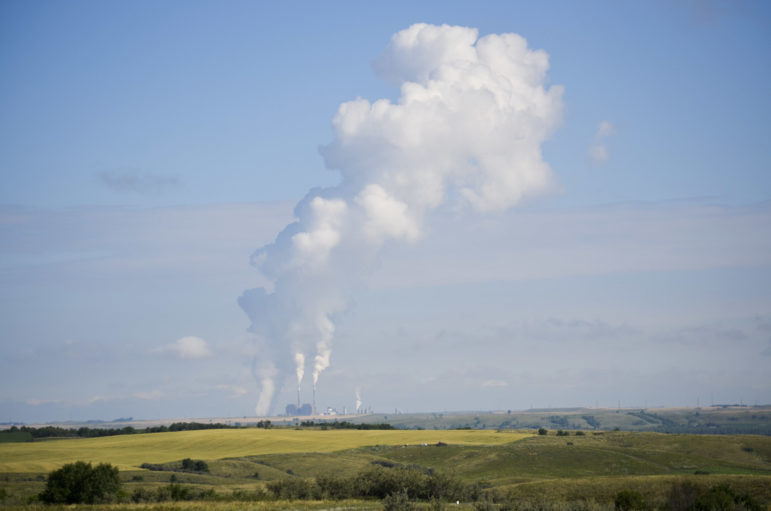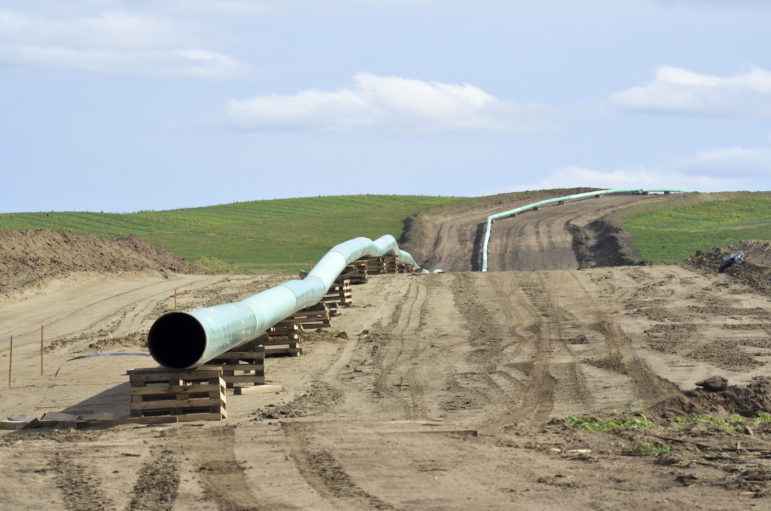Note: This post was originally published at npr.org.
President Trump campaigned on a platform to make American energy great again.
“We’re loaded,” he said, at a 2016 campaign appearance in North Dakota, referring to fossil fuel reserves. By unleashing those reserves and slashing regulations, Trump promised, he would usher in an era of “energy independence” and, ultimately, American energy dominance.
Other than the massive tax reform bill in Congress, Trump’s legislative victories have so far been few and far between. On energy and environment, however, Trump is slowly making headway, with help from a trio of powerful and like-minded cabinet members.
Energy Secretary Rick Perry has proposed subsidizing struggling coal and nuclear electricity generating plants and has delayed measures to boost energy efficiency that were supposed to take effect this year.
The head of the Environmental Protection Agency, Scott Pruitt, has erased climate change from agency priorities and is filling the ranks of political appointees with people who have previously lobbied against a slew of environmental regulations.
Finally, at the Interior Department, Secretary Ryan Zinke is shrinking national monuments while opening up more federal lands to drilling and mining.
Here are some major actions of the Trump administration to date:
Climate and environment
Trump famously called climate change a hoax and many of his cabinet members and political appointees dismiss climate change science. The administration has moved aggressively, through executive orders and agency actions, to reverse many of the environmental regulations and rules the previous administration put into place. Some examples:
- An executive order in March ordered a review of all actions that could hinder the development and exploitation of energy resources. The order immediately revoked a host of Obama administration efforts to prepare and protect the country from the impacts of climate change.
- In compliance with that executive order, EPA Administrator Scott Pruitt announced in October that he would repeal the Clean Power Plan, which aimed to cut carbon emissions from power plants. The EPA is considering whether to issue a more limited plan to deal with power plant emissions.

Amy Sisk / Inside Energy
A coal-fired power plant in central North Dakota.
- President Trump announced the U.S. will withdrawfrom the Paris Climate Accord. While actual withdrawal may take years, the move signaled a U.S. retreat from climate leadership and other major powers, including China and France, have stepped in to try and fill it.
- Through executive action, the White House removed climate considerationsfrom the environmental approval process for infrastructure projects, such as roads, bridges and pipelines. It also revoked a rule requiring higher floodstandards for federal infrastructure.
- President Trump signed a bill that overturned a rule preventing coal companies from dumping mining waste into local streams.
The EPA has also moved to repeal a number of rules, or put them under review with the intent to revise, including:
- A requirement for oil and gas companies to report methane emissions from existing oil and gas sources.
- A rule that would limit carbon dioxide emissions from new and modified power plants (the Clean Power Plan related to existing power plants).
- A rule to regulate the disposal of coal ash and other toxic discharges from power plants.
- A rule that would extend Clean Water Act protections for small waterways and streams.
Energy
The president’s executive order on “Promoting Energy Independence and Economic Growth” called for promoting “clean and safe” development of energy resources while “avoiding regulatory burdens that unnecessarily encumber energy production.” Here are a few things that have been done that aim to accomplish those goals:
- Through executive action, the president approved the much-disputed Dakota Access and Keystone XL oil pipelines.

Amy Sisk / Inside Energy
A segment of the Dakota Access Pipeline waits to be buried last year in Morton County, North Dakota.
- President Trump ordered Interior to reconsider safety regulations on offshore drilling, and an Obama administration effort to restrict drilling off the Atlantic Ocean and Alaskan coasts.
The Interior Department has also:
- Opened up large sections of federal land in Alaska to oil and gas drilling.
- Made it easier for mining to resume in Alaska’s Bristol Bay
- Ordered a review of a plan developed by western states to keep the greater sage grouse off the endangered species list. That could likely open up more land to energy development.
- Sped up the permitting process and increased the number of lease sales for oil and gas drilling on federal land.
- Delayed implementation (with the intention of rewriting) of an Obama administration rule that sought to limit methane leaks from oil and gas drilling on federal land.
- Overturned an effort to reform how royalties were calculated for oil, gas and coal on federal lands.
- Revoked a moratorium on new coal leases on public lands.
- Recommended shrinking four national monuments and revising management plans for a half dozen more. In December, Trump announced he would dramatically shrink Bear’s Ears National Monument and Grand Staircase-Escalante — both in Utah. Removing monument protections from these lands would allow energy development, such as coal or uranium mining to continue, and possibly expand. Zinke also recommended shrinking two more national monuments and revising management plans for a half dozen more.

A shovel digs coal at Cloud Peak Energy’s Antelope mine. June 2, 2016.
Long-term impact?
When President Trump was first elected, few energy analysts believed he could bring back the coal industry, or reverse the momentum of renewable energy. But, coal’s fortunes have improved this past year due to a stronger export market, and the effort to repeal the Clean Power Plan. Still, experts foresee a long-term decline. Coal-fired electricity plants are too expensive compared to natural gas, and are continuing to shut down despite full-throated support from the administration. Lifting the moratorium on new coal leases on federal land has not resulted in a single new coal lease in Wyoming, according to Travis Deti, head of the Wyoming Mining Association.
Likewise, at least some oil and gas lease sales on federal land have been met with a tepid response from industry. In December, only seven bids were received for parcels on over 10 million acres offered in the National Petroleum Reserve in Alaska, less than one percent of the acreage for sale. Similarly, a lease sale in Utah for 94,000 acres left 40,000 acres without an acceptable minimum bid.
Still, while renewable energy such as solar and wind continues to expand, some things suggest challenges ahead:
- After five years of tremendous growth, solar installations in 2017 are expected to be down 22 percent from the previous year. The slowdown is in part due to regulatory uncertainty under the Trump administration. In early 2018, Trump is set to announce his decision on whether to impose stiff trade protections on the import of cheap solar panels from Asia. The solar industry fears this could dramatically hurt growth.
- Rick Perry’s coal and nuclear subsidy proposal would give those sources a financial boost in wholesale markets. The proposal is still under review at the Federal Energy Regulatory Commission but, if approved, it could keep coal alive while spelling trouble for the renewable industry.








